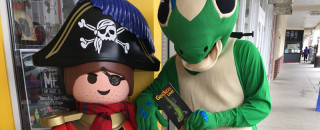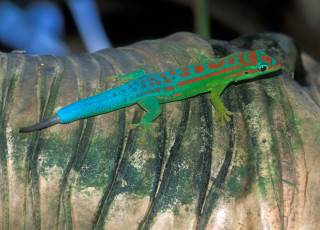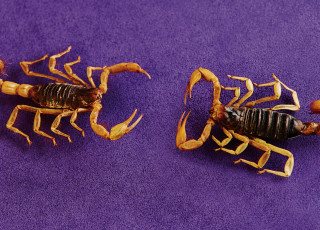"Spot the Gecko" and win a free family pass to the Natural History Museum of Utah
Since January, families have enjoyed seeing the bulging eyes and colorful skin of living geckos on display in the Natural History Museum of Utah’s Geckos Live! exhibit. Now in April, Utahns have a chance to catch a glimpse of a life-sized spotted gecko walking down Main Street, shopping at a mall, eating in a restaurant or hanging out at a library. So keep your eyes open and don't forget to snap a photo of the colorful guy and post it on social media for a chance to win a prize. Entries will be randomly selected each week through April and winners will receive a day pass for a family of six to the Museum. At the end of April, the best gecko photo will win the "Grand Prize," of one annual family pass to the Museum.
“There’s only one month remaining to visit the Geckos Live! exhibit,” said Sarah George, executive director of the museum. “And, what better way to remind those who haven’t seen this astonishing exhibit, than to take a life-sized, costumed “gecko” out into the community. Join in the fun, and don't miss this opportunity to take a selfie with him for a chance to win a free pass for your family.”
To enter Spot the Gecko, take a photo of "Spot" and post it on @NHMU on Twitter, on Instagram using the hashtag #NHMUSpotTheGecko or on the Natural History Museum of Utah's Facebook page, with #NHMUSpotTheGecko. Like and follow the museum on social media and get weekly hints of where the NHMU gecko will be making random appearances, anywhere from Farmington to South Jordan. For identifying purposes, Spot, the life-sized gecko will be carrying a shoulder satchel with the NHMU logo, distributing flyers about Geckos Live! and even vouchers for two dollars off museum admission.
More than 1,200 species of geckos exist in the world, ranging from shadowy, nighttime hunters with bulging eyes and squawking voices, to neon-colored nectar-eaters that move in daylight. Gecko’s Live! showcases more than 200 living geckos from around the world and re-creates the diverse species’ lush natural environments in incredible detail. The exhibit offers hands-on interactives featuring gecko’s night vision, voices, camouflage, and building a custom gecko for different environments. Geckos are lizards that have adapted to a variety of habitats and conquered landscapes such as rainforests, cold mountain slopes and parched deserts. Some can even lick their own eyeballs!
Special lectures and other activities related to the Geckos Live! exhibit will be featured at the Natural History Museum of Utah through May 1. Of course, this temporary special exhibit is just a bonus to the Museum's 10 permanent galleries visitors come to explore. A few Museum gallery favorites include Past Worlds, Great Salt Lake, Native Voices, the Sky Terrace and more.
For additional information, visit https://nhmu.utah.edu/geckos or call 801.581.4303.
Geckos Live! is made possible through the generous support of presenting sponsor, the George S. and Dolores Doré Eccles Foundation; major sponsors Bing and Judy Fang and Rio Tinto Kennecott; exhibit sponsors, the Emma Eccles Jones Foundation and W. Hague and Sue J. Ellis Foundation; community sponsors, Lawrence T. Dee and Judy T. Dee Foundation and through Salt Lake County Zoo Arts & Parks.
Geckos Live! was created by Peeling Productions at Clyde Peeling’s REPTILAND.
# # #
About the Natural History Museum of Utah
The Natural History Museum of Utah is one of the leading scientific research and cultural institutions in the country. Established in 1963, the Museum‘s collections contain over 1.2 million objects and offers innovative exhibitions and educational programs to thousands of residents and visitors each year, including traveling and permanent exhibits, special events and other programs. With an expected attendance of 180,000 visitors a year, the Museum also offers a variety of outreach programs to communities and schools throughout Utah, reaching every school district in the state annually. The Museum has an active science program with more than 30 scientists and 10 field exhibitions each year.
Press contacts and links
-
Press Contact
Beth Mitchell



